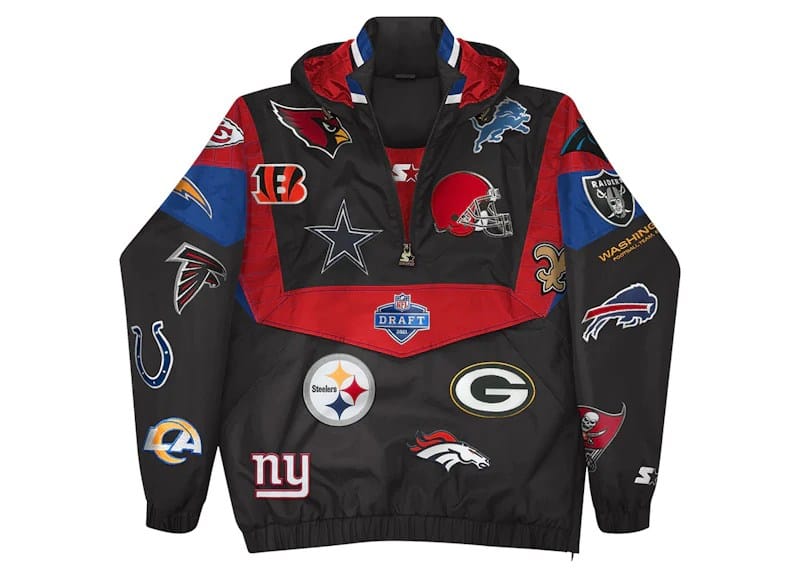Football is a sport known for its hard-hitting action and the inherent risk of injury. Protecting players is paramount, and one crucial piece of equipment leading the charge in injury prevention is the flak jacket. This comprehensive guide explores the evolution, benefits, and future of flak jackets in football, providing you with everything you need to know about this essential piece of protective gear.
The Evolution of Rib Protection
Think of football and you likely envision powerful tackles and explosive plays. But beneath the surface of this high-impact sport lies a constant focus on player safety. Enter the flak jacket, a piece of equipment revolutionizing how athletes protect themselves on the gridiron. Initially designed for military personnel, flak jackets have found a critical role in shielding football players, particularly those in high-contact positions, from the intense forces encountered during gameplay. Over time, these jackets have transformed from bulky, restrictive gear to streamlined, high-tech armor, allowing players to maintain agility while staying protected. [Protect yourself from counterfeiting by using a counterfeit money detector pen. This reliable and easy-to-use tool will give you peace of mind when handling cash.]
From Battlefield to Football Field: A History of Protection
The flak jacket’s journey from the battlefield to the football field is a testament to its adaptability and effectiveness. In the 1970s, the need for enhanced player protection in football became increasingly apparent. Inspired by the protective gear used by the military, flak jackets were introduced to professional football, making their NFL debut in 1978. These early flak jackets provided a much-needed layer of defense against impacts but were often cumbersome and restricted movement. As technology advanced, so did the design and materials used in flak jackets. The introduction of lightweight, high-strength materials like Kevlar, the same material used in bulletproof vests, marked a significant turning point. This allowed for the creation of flak jackets that offered superior protection without sacrificing mobility.
Modern Marvels: The Science Behind Impact Absorption
Today’s flak jackets are marvels of engineering, strategically designed to maximize impact absorption and minimize the risk of injury. They typically combine a tough outer shell, often made of impact-resistant plastics or Kevlar, with a cushioned inner lining consisting of layers of urethane foam and sometimes air pockets. This combination provides a dual layer of defense: the hard shell disperses the initial force of an impact, while the inner padding absorbs the remaining energy, minimizing the blow to the body. This layered approach is crucial for dissipating force and protecting vulnerable areas like the ribs, sternum, and kidneys. [Explore the fibia collection, featuring a wide array of fasteners and accessories to meet your specific needs.]
Who Wears a Flak Jacket and Why?
While flak jackets offer benefits to all football players, certain positions benefit most from the added protection. Understanding the specific needs of each position helps determine the appropriate level of protection required.
Quarterbacks: Shielded from the Storm
Quarterbacks are often the most visible players wearing flak jackets, and for good reason. As the playmakers of the offense, they’re prime targets for opposing defenses. Linebackers and defensive linemen are constantly pursuing them, aiming to disrupt the play and bring them down. The flak jacket provides a vital layer of defense against these powerful impacts, reducing the risk of rib fractures and other serious torso injuries.
Running Backs: Absorbing the Blows
Running backs are another position where flak jackets are frequently used. Their role involves absorbing constant contact as they push through the defensive line, making them vulnerable to hard hits. Flak jackets provide the necessary protection to withstand these repeated blows, minimizing the risk of injuries to the ribs, chest, and back.
Beyond QB and RB: Expanding the Scope of Protection
While quarterbacks and running backs are the most common users, the benefits of flak jackets extend to other positions as well. Wide receivers, tight ends, linebackers, and defensive linemen can all experience significant impacts during gameplay. Wide receivers, for example, often take hard hits after catching a pass in the middle of the field, while linebackers and defensive linemen are constantly engaged in collisions. A flak jacket provides an extra layer of security, helping to mitigate the risk of injury in these high-impact positions. The choice to wear a flak jacket often depends on the player’s individual needs, playing style, and previous injury history.
Choosing the Right Fit: A Guide to Flak Jacket Selection
Selecting the right flak jacket isn’t a one-size-fits-all process. Several factors come into play, including the player’s position, playing style, and the level of competition.
Factors to Consider:
Position on the Field: The demands of each position influence the type of flak jacket needed. Quarterbacks may prioritize chest and sternum protection, while running backs may need extra rib and back coverage.
Playing Style: Aggressive players may prefer thicker padding and reinforced construction, while those who rely on agility and speed might opt for lighter, more flexible options.
Level of Competition: Youth football leagues may have different requirements than high school, college, or professional levels. The intensity of play typically dictates the level of protection required.
Key Features:
- Fit: A snug but not restrictive fit is essential, allowing for a full range of motion without compromising protection.
- Padding: High-quality padding that effectively absorbs impact is crucial. Look for materials like urethane foam or other advanced shock-absorbing materials.
- Breathability: Breathable materials and ventilation features are essential for comfort, especially in hot weather conditions.
- Durability: The flak jacket should be made of durable materials that can withstand the wear and tear of football.
- Weight: Finding a balance between protection and mobility is key. Lighter flak jackets are preferable when agility is paramount.
The Future of Flak Jackets: Innovations in Player Safety
The evolution of the flak jacket is an ongoing process. Researchers are continually exploring new materials and technologies to enhance protection, comfort, and performance.
Smart Materials and Integrated Sensors: The Next Generation of Protection
- Smart Materials: Researchers are investigating smart materials that can react to impact by stiffening upon collision and then returning to a flexible state. This would provide dynamic protection, adapting to the specific needs of the moment.
- Integrated Sensors: Sensors embedded in flak jackets could monitor impact forces and provide valuable data for injury prevention and performance analysis. This data could help coaches and medical professionals understand the forces players experience during gameplay and identify potential risk factors for injury.
Ongoing Research and Evolving Conclusions
While current flak jackets offer significant protection, the future of this technology is brimming with potential. Some experts believe that further advancements in materials science could lead to even lighter, more flexible, and more protective flak jackets. Others are exploring the integration of smart technology to provide real-time feedback on impact forces and potential injuries. It’s important to remember that research in this area is ongoing, and our understanding of the best ways to utilize and design protective equipment will continue to evolve.
Conclusion: A Commitment to Player Well-being
Flak jackets have become an integral part of football equipment, reflecting the sport’s growing emphasis on player safety. By understanding the benefits, features, and ongoing advancements in flak jacket technology, players, coaches, and parents can make informed decisions about protective gear and contribute to a safer and more enjoyable football experience. The future of flak jackets is bright, and these advancements promise even greater protection for the athletes who dedicate themselves to this demanding sport.
















1 thought on “Flak Jacket Football: Your Guide to Rib Protection and Performance”
Comments are closed.